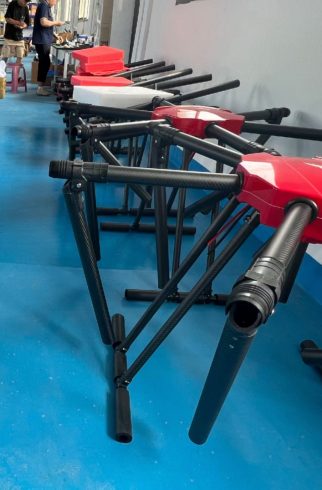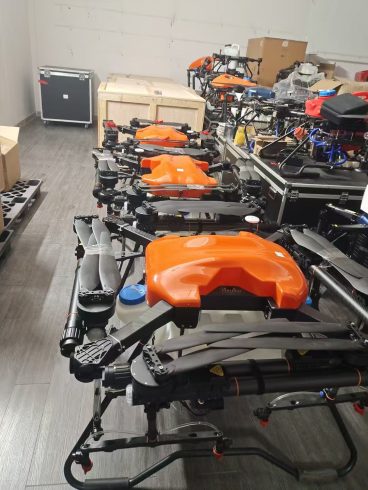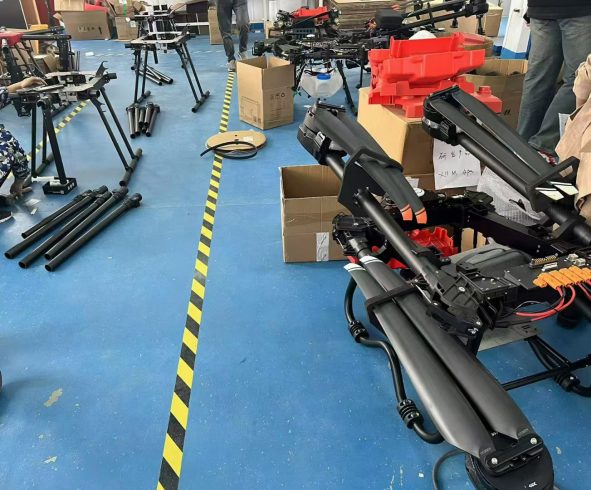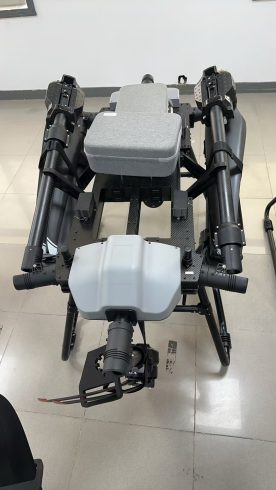![图片[1]-Maximizing Efficiency and Longevity: Essential Drone Maintenance Practices for Spraying Tasks-msoen](https://www.msoen.com/wp-content/uploads/2025/03/24c32cbaa636.webp)
Learn critical maintenance tips for agricultural drones used in spraying tasks. From cleaning protocols to battery care, discover how to optimize performance, avoid downtime, and extend equipment lifespan.
Maximizing Efficiency and Longevity: Essential Drone Maintenance Practices for Spraying Tasks
Agricultural drones are workhorses in modern farming, but their performance hinges on meticulous maintenance. Neglecting upkeep can lead to costly breakdowns, uneven spray coverage, and even safety hazards. For farmers relying on drones to apply pesticides, herbicides, or fertilizers, routine maintenance is non-negotiable. This article outlines actionable steps to keep spraying drones in peak condition, ensuring precision, safety, and cost-effectiveness.
Why Maintenance Matters for Spraying Drones
Spraying drones face unique stresses:
- Chemical Exposure: Corrosive pesticides degrade components.
- Environmental Wear: Dust, moisture, and UV rays damage electronics.
- Mechanical Strain: Repeated takeoffs, landings, and payload shifts accelerate wear.
Poor maintenance leads to:
- Clogged Nozzles: Reduced spray efficiency by up to 30%.
- Battery Degradation: Shortened flight times and unexpected failures.
- Sensor Inaccuracy: Erroneous data causing over- or under-application.
Proactive care not only saves money but also safeguards crop yields and environmental compliance.
Daily/Post-Flight Maintenance Checklist
- Clean the Spraying System
- Nozzles: Remove and soak in a mild detergent solution nightly to prevent chemical buildup. Use a micro-needle brush for stubborn clogs.
- Pumps and Tubing: Flush with isopropyl alcohol to dissolve residues. Inspect for cracks or leaks.
- Filters: Replace pre-filters weekly and HEPA filters every 30 days (or after spraying oily chemicals).
Pro Tip: Use a pressure gauge to test nozzle flow rates monthly. A drop below 80% indicates clogging.
- Inspect and Lubricate Moving Parts
- Motor Bearings: Apply silicone-based lubricant to reduce friction and heat.
- Propellers: Check for warping or cracks. Replace if blades deviate by >1mm.
- Spray Arms: Lubricate joints to prevent stiffness during flight.
- Battery Care
- Storage: Keep batteries at 40–60% charge when not in use. Store in fireproof containers away from moisture.
- Charging: Use manufacturer-approved chargers to avoid overcharging. Balance cells every 50 cycles.
- Inspection: Look for swollen casings, frayed wires, or unusual odors. Replace batteries showing signs of thermal damage.
Weekly/Monthly Preventive Maintenance
- Structural Integrity Check
- Frame: Inspect for cracks, rust, or corrosion using a UV flashlight (detects early oxidation).
- Fasteners: Tighten bolts and screws after 10 flight hours.
- Landing Gear: Replace foam pads if worn below 5mm thickness.
- Sensor and Camera Calibration
- LiDAR/Imaging Sensors: Recalibrate monthly using calibration targets. Misalignment causes 15–20% spray drift errors.
- RTK Modules: Verify GPS accuracy quarterly; drift beyond 2cm requires professional service.
- Software Updates
- Update firmware and flight control software to patch bugs and improve compatibility with pesticide application algorithms.
Addressing Common Issues
- Uneven Spray Patterns
- Causes: Nozzle wear, incorrect nozzle angle, or crosswinds.
- Solution: Realign nozzles using a laser level. Reprogram nozzle tilt angles via flight software.
- Intermittent Motor Failures
- Causes: Overheating due to excessive payload or blocked cooling vents.
- Solution: Reduce spray load by 10% during high-heat flights. Clean vents with compressed air weekly.
- Data Logging Errors
- Causes: Corrupted SD cards or faulty IMUs.
- Solution: Use industrial-grade microSD cards (Class 10, A1 rating). Reset IMU after every 50 flight hours.
Long-Term Storage Best Practices
For drones not in seasonal use:
- Disassemble and bag individual components in anti-static bags.
- Use silica gel packs to maintain dryness (<30% humidity).
- Store in a temperature-controlled environment (15–25°C).
The Future of Drone Maintenance
Emerging technologies promise smarter upkeep:
- AI Predictive Analytics: Monitors sensor data to predict bearing failures or battery degradation.
- Robotic Cleaning Stations: Automated systems clean nozzles and inspect frames using computer vision.
- Self-Healing Coatings: Nanotechnology sprays repair minor scratches on propellers and frames.
Conclusion
Regular maintenance is the backbone of reliable drone performance in spraying tasks. By dedicating time to daily checks, monthly calibrations, and long-term care, farmers can avoid costly downtime, reduce chemical waste, and ensure consistent crop protection. Embracing predictive maintenance tools will further streamline operations, making drones an even more indispensable asset in sustainable agriculture. For spray task success, treat your drone like a trusted team member—care for it, and it will care for your crops.
Target Keywords: drone maintenance for spraying tasks, agricultural drone care, nozzle cleaning techniques, drone battery maintenance, pesticide drone calibration.












暂无评论内容